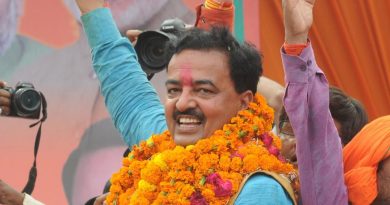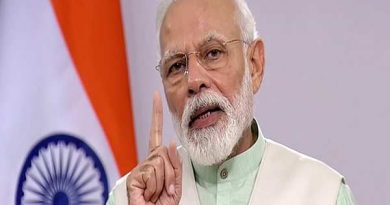| |
|---|
News Desk: Farmer’s protests and mobilisation are as active as before, it is only that the media has blacked it out.

Farmers are not exhausted, but they sure are in a quandary as to what to do next: not only to get farm laws repealed but also to put agriculture back on the economic map of the country.
They are also struggling to find the Archimedean point between short-term goals and long-term reforms, and between social change and economic interests. They also are trying to find the right means that are inclusive and non-violent but sufficient to put pressure on the current regime.
They are inching towards influencing electoral outcomes as a means of putting pressure on the current regime but also trying to assess their own limitations vis-à-vis BJP’s electoral machine. Farmers realise the mammoth task at hand and are also aware that they are pitched against the organisational abilities of the RSS, and in this, they need to make a choice between pan-Indian mobilisation and regional decentralisation.
There are many issues that we now realise need to be considered afresh to make mass mobilisations successful in the India of today. There is the question of scale and regional differences that make any pan-Indian mobilisation difficult. Land patterns and agrarian issues are very different in each region, even if there is a generic crisis of agriculture.
To expand the movement beyond farmers and bring in other sections of society and other related issues of welfare and public goods, including subsidies, public education and health, is imperative. This is to enlarge the scope and appeal of farm protests and locate them in a larger context and allow it to relate to more diverse social groups.
However, to bring such diverse groups together there needs to be a common narrative on one hand and the need to accommodate different levels of preparedness on the other. One has to devise the right means of protest. Farmers have preparedness for a long-term battle and can even weather state repression, which may not be true of many other sections, including a range of employees and social activists, among others. What then are the right means of protest that are inclusive, yet effective?
Raising against an indifferent regime
Farm protests in particular, but protests in general, are devised assuming a liberal-democratic state and a constitutional vision shared with the political regime, but today that is not the reality. They are confronting a regime that is neither liberal nor constitutional. Civil disobedience, Satyagraha and other non-violent means evoke sympathy by appealing to ‘collective conscience’, but today’s regime seems to have no conscience and sees things in a more predatory fashion. Every difference is a war-like condition.
When one is resigned to the fact that no matter what, the current leaders will not respond, what real-time options are left for protest politics? In fact, part of the challenge is to overcome the inertia that has seeped into many groups because they feel the regime is indifferent and wallows in its own self-praise. For the BJP-RSS, it is no longer only about repealing the farm laws, it is now more about dissipating dissent and testing its limits. They seem to look at it as the last frontier. If they can win this against a massive mobilisation by the farmers, then no other protest stands a chance.
They scaled up collective tolerance to sufferings as a result of the demonetisation, lockdown and migrants moving back, and mob lynchings, and now they are attempting to scale down dissent by demonstrating the limits of insensitive response. It is hoping for a collective de-mobilisation and demoralisation, which the regime can possibly pass off as in the best of ‘national interests’.
In light of these challenges, farm protests need to plan their next move. How long term are these protests going to be? Should they plan keeping the 2024 elections in mind? Is it only about electoral outcomes or about politicising the society at large about the need for social changes related to caste and gender? But how large can be this gambit of issues be, because India has all kinds of problems one can imagine.
Is it then essentially about bringing back the welfare state, as against corporate growth? Do the farmers have the resources and the narrative to expand the agenda to such levels of complexity? But if they short-circuit the process it looks unlikely they will have a wider appeal. These are formidable questions right at the heart of the future of democracy and its viability.
A democratic upsurge
This could well be the beginning of a ‘third democratic upsurge’ that can forge cross-caste, class, gender and regional solidarities. For the first time, we now have a mobilisation that is thinking of anchoring larger struggles beyond immediate sectoral interests. It also now needs to consider where the difference between civil society and representative politics may need to be rethought, where various civil society and cultural organisations may have to take up electoral campaigns against the BJP, and the RSS.
The signs of this are already visible in Bengal, where farmer groups campaigned, alongside civil rights and social activists to not vote for the BJP, and instead choose any other party. Electoral campaigns will have to be connected to different modes of protest by students, unemployed youth, disgruntled teachers, journalists, social activists, Dalit-Bahujan organisations, women’s organisations, among others.
Internal churning, social change and the fight against prejudice need to be connected to the political change of the current regime. They may have to eventually connect with various regional and national political parties, maintaining ‘principled distance’ and exclusively on issues concerning welfare and stalling neoliberal reforms.




